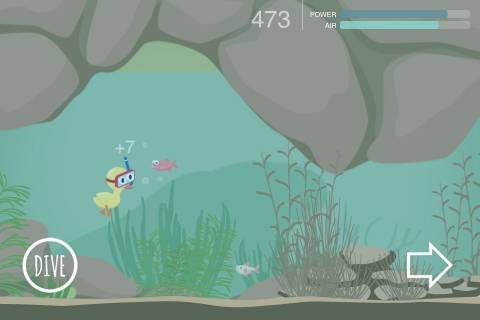

At these times, organs and tissues rely on anaerobic (oxygen-free) metabolism. In addition, the heart rate is reduced, and blood flow to most other organs and skeletal muscles is curtailed. During a dive, available oxygen is rationed sparingly to sensitive tissues in the central nervous system and sensory organs. In fact, diving ducks reduce their oxygen consumption while they are underwater. Like other specialized diving birds, diving ducks also have an unusually high tolerance for asphyxia, or lack of air. For example, the respiratory system of lesser scaup is estimated to account for 52 percent of their initial buoyancy. Captive lesser scaup monitored in a dive tank spent only about a quarter of each dive feeding and the majority of time diving and ascending.Īs you might expect, diving ducks carry large volumes of air with them when they dive. A typical dive takes 10-30 seconds, but diving ducks may remain underwater for a minute or more. Not surprisingly, the duration of each dive increases with foraging depth.

In contrast, redheads and ring-necked ducks often feed like dabblers, either by tipping up or by immersing their heads to probe the bottom substrate or grab food just below the water's surface. Most pochards and ruddy ducks feed in two to 10 feet of water on average, but lesser scaup wintering in coastal areas have been observed feeding in up to 40 feet of water. Sea ducks are the most accomplished divers among waterfowl and typically feed in water 10-65 feet deep, although long-tailed ducks are capable of diving much deeper (see sidebar). The depths at which diving ducks forage vary significantly. In fact, research on captive canvasbacks found that the birds dove more often and for longer periods at night. Diving ducks will actively forage at all times of day or night. Once near the bottom, diving ducks use their feet to maintain a hovering position while the birds forage for aquatic insects, small mollusks, seeds, vegetation, roots, tubers, and other food. They steer during descent largely by shifting their head and tail positions. Once underwater, the birds use their feet and wings to propel them downward in search of food. Next, with a single thrust of their powerful legs and feet, diving ducks arch their bodies upward and dive headlong, quickly disappearing beneath the water's surface. Just before they dive, the birds compress their feathers against their body, squeezing out air, which further reduces buoyancy. But diving ducks typically have higher body densities than other waterfowl. In general, most birds are lighter than water. These adaptations help propel the birds while they are underwater. In addition, divers' legs are set much farther back on their body, and their feet are much larger and have a lobed hind toe. Divers' wings are also more compact, which allows them to be compressed tightly against the body for greater diving efficiency. First, the body of a diving duck is much more compact and fusiform (wider in the middle and tapering toward the end) than that of a dabbler.

You will notice several obvious physical characteristics that set them apart. The next time you are fortunate enough to harvest a diver and a dabbler on the same day, take a close look at each bird. While there are significant differences among these birds, they all share unique behavioral, morphological, and physiological adaptations for diving and feeding underwater. This unique group of species includes the stifftails (ruddy ducks), sea ducks (eiders, scoters, mergansers, goldeneyes, buffleheads, long-tailed ducks, and harlequin ducks) and pochards (canvasbacks, redheads, scaup, and ring-necked ducks). Coluccy, Ph.D., and Heather ShawĪmong North American waterfowl, three distinct tribes of ducks are collectively known as diving ducks.


 0 kommentar(er)
0 kommentar(er)
